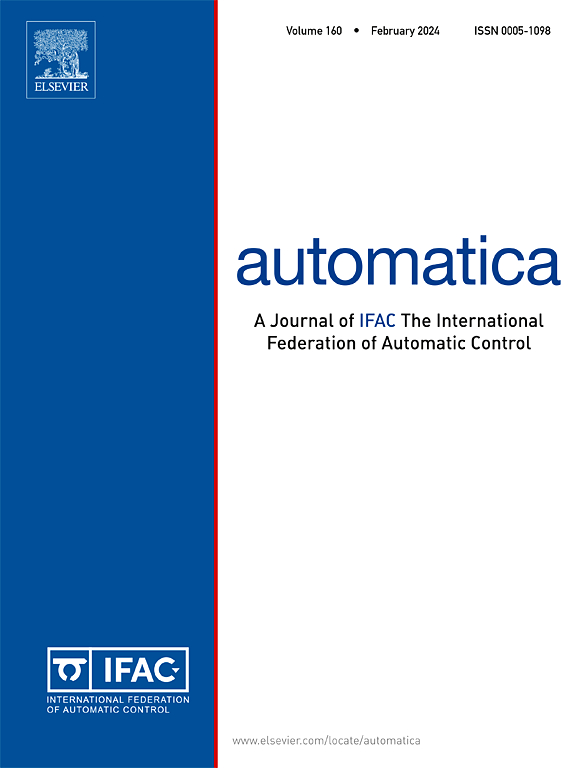Deadzone-Adapted Disturbance Suppression Control for strict-feedback systems
IF 4.8
2区 计算机科学
Q1 AUTOMATION & CONTROL SYSTEMS
引用次数: 0
Abstract
In this paper we extend our recently proposed Deadzone-Adapted Disturbance Suppression (DADS) Control approach from systems with matched uncertainties to general systems in parametric strict feedback form. The DADS approach prevents gain and state drift regardless of the size of the disturbance and unknown parameter and achieves an attenuation of the plant output to an assignable small level, despite the presence of persistent disturbances and unknown parameters of arbitrary and unknown bounds. The controller is designed by means of a step-by-step backstepping procedure which can be applied in an algorithmic fashion. Examples are provided which illustrate the efficiency of the DADS controller compared to existing adaptive control schemes.
严格反馈系统的死区适应性干扰抑制控制
在本文中,我们将最近提出的死区适应干扰抑制(DADS)控制方法从具有匹配不确定性的系统扩展到参数严格反馈形式的一般系统。无论干扰和未知参数的大小如何,DADS 方法都能防止增益和状态漂移,并在存在持续干扰和任意未知参数的情况下,将工厂输出衰减到一个可分配的小水平。该控制器是通过逐步反步进程序设计的,可按算法方式应用。本文提供的示例说明了 DADS 控制器与现有自适应控制方案相比的效率。
本文章由计算机程序翻译,如有差异,请以英文原文为准。
求助全文
约1分钟内获得全文
求助全文
来源期刊

Automatica
工程技术-工程:电子与电气
CiteScore
10.70
自引率
7.80%
发文量
617
审稿时长
5 months
期刊介绍:
Automatica is a leading archival publication in the field of systems and control. The field encompasses today a broad set of areas and topics, and is thriving not only within itself but also in terms of its impact on other fields, such as communications, computers, biology, energy and economics. Since its inception in 1963, Automatica has kept abreast with the evolution of the field over the years, and has emerged as a leading publication driving the trends in the field.
After being founded in 1963, Automatica became a journal of the International Federation of Automatic Control (IFAC) in 1969. It features a characteristic blend of theoretical and applied papers of archival, lasting value, reporting cutting edge research results by authors across the globe. It features articles in distinct categories, including regular, brief and survey papers, technical communiqués, correspondence items, as well as reviews on published books of interest to the readership. It occasionally publishes special issues on emerging new topics or established mature topics of interest to a broad audience.
Automatica solicits original high-quality contributions in all the categories listed above, and in all areas of systems and control interpreted in a broad sense and evolving constantly. They may be submitted directly to a subject editor or to the Editor-in-Chief if not sure about the subject area. Editorial procedures in place assure careful, fair, and prompt handling of all submitted articles. Accepted papers appear in the journal in the shortest time feasible given production time constraints.
 求助内容:
求助内容: 应助结果提醒方式:
应助结果提醒方式:


